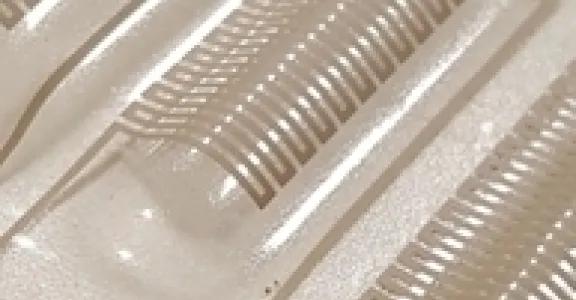Printing technologies become, in manufacturing electronic components, an innovative method to produce a large range of devices including lighting, medical devices, batteries, solar cells, sensors, RFID antennas, … In comparison with classical technologies based on photolithography and subtractive techniques inherently wasteful and including etching, and the use of toxic chemicals and hazardous materials, these new technologies are fully additive.
During printing, functional materials, conductive and smart inks, can be patterned by selective deposition such as inkjet, screen printing or aerosol jet printing... Materials are printed only where they are needed and this significantly reduces manufacturing steps, energy and materials consumption. Printing technologies allow also sheet-to-sheet or roll-to-roll mass production. Electronics can be manufactured not only on rigid, but also on thin, lightweight, flexible, and large area substrates. Printing technologies and the multiplicity of types of substrates open up launching brand new products that could have never existed before and realize bendable, rollable, wearable, or elastically stretchable devices. Because of its implementation with a lower ecological impact and the potential for miniaturization and reduction of masses and sizes that they allow, printed electronics seems to be, in many cases, the future of more environmentally responsible electronics.
Are these technologies really paving the way to more sustainability?
There is obviously a flip side to the coin and a series of trapdoors that will have to be overcome. Most of these products are intended to be embedded in structures (structural electronics), including plastic housings and textiles, in order to reduce weights and sizes. The reduction in size is indeed an advantage for durability with lighter structures and less expensive in material and energy, but much more complex to process at the end of life! A new challenge therefore arises if one wants to reach more circularity: How to reuse these highly integrated and dedicated components? How to recover and separate incompatible materials in these embedded products?
The Product Development Hub at Sirris has been involved now for a year in the Cornet project 'ReInE', in order to provide an initial answer to these problems. In this project, the Institute INM in Saarbrücken is working on the development of special sacrificial release layers to allow the disassembly of the printed inks at the end of life. Hahn & Schickard in Stuttgart and the Product Development Hub are working on the processing and the qualification of these materials: printing, thermoforming, overmoulding and testing of printed electronics. Finally, the Centre CTP in Tournai is working on the recyclability and the separation of the components at the end of life.
Interested in structural printed electronics or the ReinE project and its first results? Contact us!


